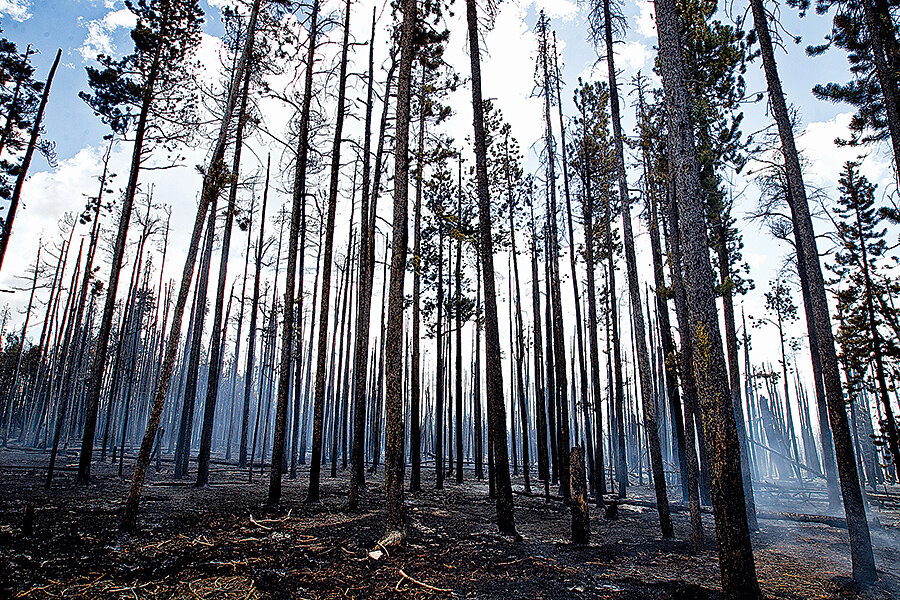A talent for taming a primal force
Loading...
Fight them or let them burn? The notion that forest fires should be stopped seemed absurd to native Americans and early settlers. Fires were a constant of rural life. Smoke was always smoldering over fields and woods being cleared or because of lightning strikes or other unpredictable causes.
Then an excellent thing happened: Shortly after taking the oath of office in 1901, Teddy Roosevelt began using his presidential authority to protect public land, establishing national parks, national forests, and a string of reservations to safeguard endangered species and priceless monuments. The 230 million acres Roosevelt set aside – places with evocative names like Crater Lake and Devils Tower – were dubbed “national treasures.”
As with any national treasures, the first impulse was to protect them. At the dawn of a can-do century, that meant creating the US Forest Service and marshaling brigades of young men (and later, women) to combat the forest fires that boiled up every summer.
The 100-year war on wildfires has had heroes, casualties, and dates that live in infamy. One of the earliest of these was in the dry, windy August of 1910, when a firestorm exploded in the upper Rockies and 78 firefighters perished, more than in any event until the 2001 terror attack on the World Trade Center. One of the heroes of that terrible summer was a taciturn ranger named Ed Pulaski, who saved 40 men after herding them into an abandoned mine shaft and throwing water on blankets covering the entrance until he passed out. He survived and went on to invent the firefighting tool that bears his name.
The Mann Gulch fire of 1949 claimed 13 firefighters in the still-young profession of smoke-jumping; that tragedy was immortalized by Norman Maclean in “Young Men and Fire.” Caught inside a blowup, he wrote, a firefighter could only see pieces of what was raging around him – “burning cones, branches circling on wings, a log in flight without a propeller.” In his stirring ballad “Cold Missouri Waters,” James Keelaghan recounts the improvised escape fire that foreman (and survivor) Wagner Dodge lit but could not persuade others to enter.
Firefighting has always been dangerous, hectic work, and a smoke jumper like Tim Quigley, as you’ll see in Dan Wood’s cover profile, is a study in quiet professionalism set against a backdrop of woodland splendor and the possibility of sudden, overwhelming danger.
If you know a firefighter – in a town or city or forest – you know what Mr. Quigley is made of. Fire is a primal force, gentle and useful when tamed, merciless when unleashed. After more than a century of battle, a consensus is building that not every forest fire must be fought and that homeowners, ranchers, and businesses can do more preventive work to avoid putting the lives of firefighters on the line.
Even so, we’ll still need firefighters. We’ll still need men and women drawn to the awesome beauty of wilderness and brave enough to face its occasional, awesome fury.
John Yemma is the Monitor's editor-at-large. He can be reached at yemma@csmonitor.com.








